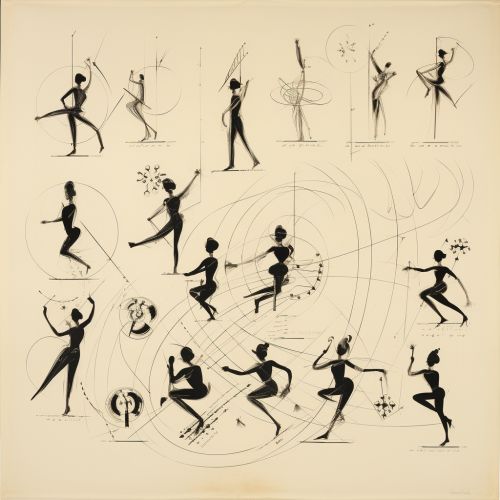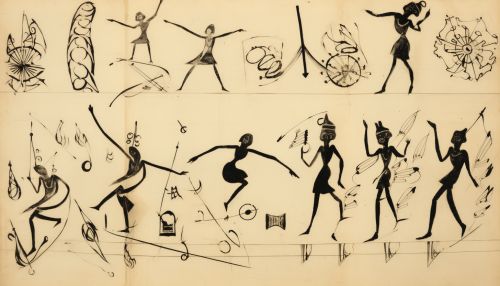Labanotation
Introduction
Labanotation, also known as Kinetography Laban, is a system of dance notation developed by Hungarian dance artist and theorist Rudolf Laban. It is used to record and analyze human movement, particularly dance and other forms of physical expression. Labanotation is recognized for its comprehensive ability to document the complexity of physical movements, making it a valuable tool in the fields of dance, anthropology, and kinesiology.


History
Rudolf Laban began developing Labanotation in the early 20th century, with the aim of creating a universal language for movement. He first introduced the system in his 1928 book, "Kinetographie Laban". Laban's work was further developed and refined by his students and collaborators, most notably Ann Hutchinson Guest, who founded the Language of Dance Centre in London and has written extensively on Labanotation.
Structure and Symbols
Labanotation uses a system of symbols to represent the parts of the body, the direction of movement, the dynamics of the movement, and the timing. The symbols are written on a stave, similar to musical notation, which reads from bottom to top. The center line of the stave represents the body's center of gravity, with symbols to the left and right indicating movements of the left and right sides of the body, respectively.
Applications
While Labanotation was initially developed for dance, its applications have expanded to include any area where the analysis of movement is beneficial. This includes fields such as physical therapy, sports science, robotics, and animation. In these fields, Labanotation provides a precise and detailed method for recording and analyzing movement patterns.
Learning and Teaching Labanotation
Learning Labanotation requires a deep understanding of the body and movement. It is typically taught in dance and movement studies programs at universities and conservatories. There are also certification programs available through organizations such as the Dance Notation Bureau in New York.
Criticisms and Alternatives
While Labanotation is praised for its comprehensiveness, it has also been criticized for its complexity. Some find the system difficult to learn and read, and it can be time-consuming to notate complex movements. Alternatives to Labanotation include Benesh Movement Notation and Eshkol-Wachman Movement Notation, each with their own strengths and weaknesses.
Conclusion
Labanotation remains a significant tool in the recording and analysis of human movement. Its comprehensive nature allows for a detailed understanding of the intricacies of physical expression, making it a valuable resource in a variety of fields.
